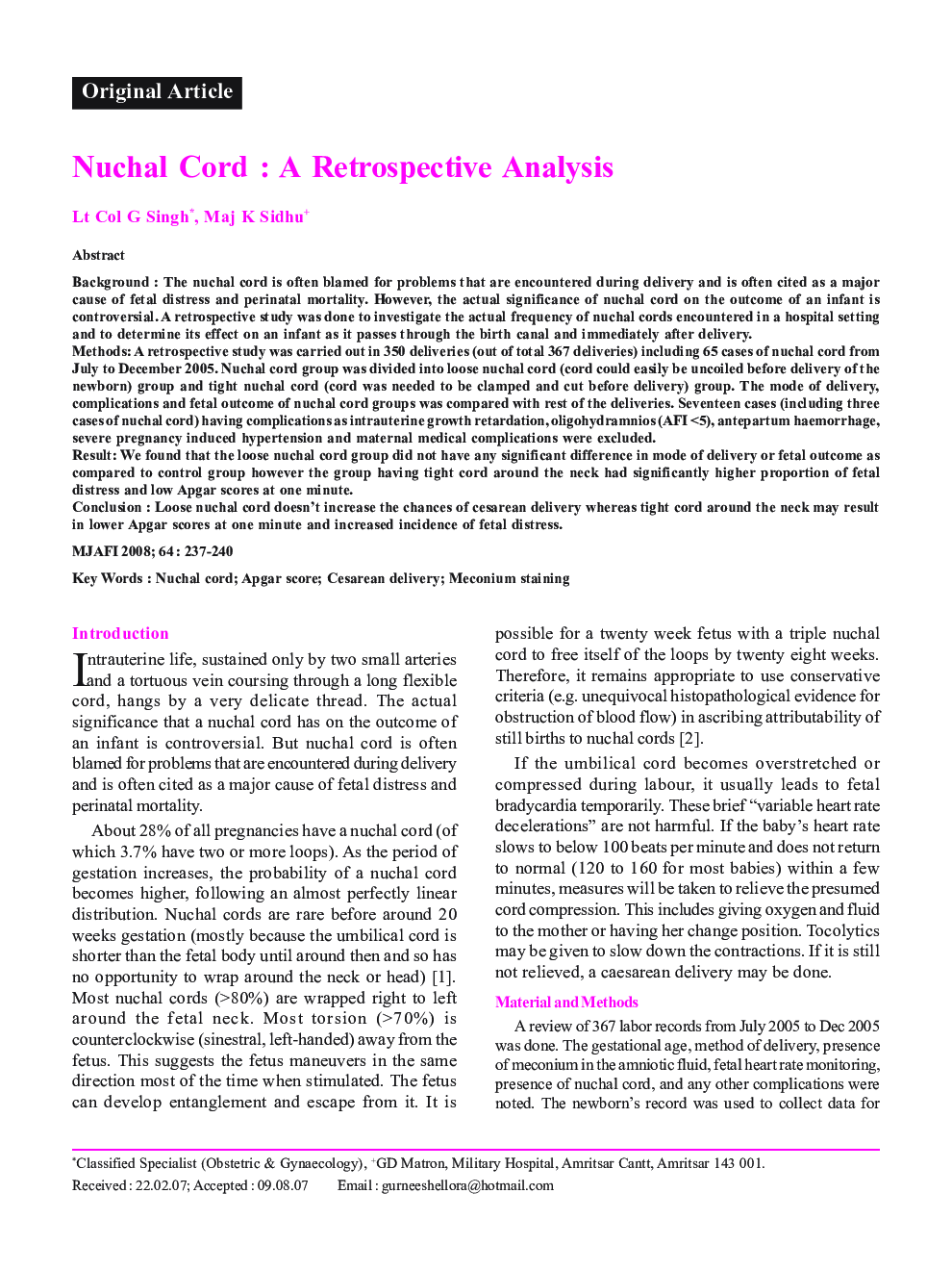| Article ID | Journal | Published Year | Pages | File Type |
|---|---|---|---|---|
| 3162224 | Medical Journal Armed Forces India | 2008 | 4 Pages |
BackgroundThe nuchal cord is often blamed for problems that are encountered during delivery and is often cited as a major cause of fetal distress and perinatal mortality. However, the actual significance of nuchal cord on the outcome of an infant is controversial. A retrospective study was done to investigate the actual frequency of nuchal cords encountered in a hospital setting and to determine its effect on an infant as it passes through the birth canal and immediately after delivery.MethodsA retrospective study was carried out in 350 deliveries (out of total 367 deliveries) including 65 cases of nuchal cord from July to December 2005. Nuchal cord group was divided into loose nuchal cord (cord could easily be uncoiled before delivery of the newborn) group and tight nuchal cord (cord was needed to be clamped and cut before delivery) group. The mode of delivery, complications and fetal outcome of nuchal cord groups was compared with rest of the deliveries. Seventeen cases (including three cases of nuchal cord) having complications as intrauterine growth retardation, oligohydramnios (AFI <5), antepartum haemorrhage, severe pregnancy induced hypertension and maternal medical complications were excluded.ResultWe found that the loose nuchal cord group did not have any significant difference in mode of delivery or fetal outcome as compared to control group however the group having tight cord around the neck had significantly higher proportion of fetal distress and low Apgar scores at one minute.ConclusionLoose nuchal cord doesn't increase the chances of cesarean delivery whereas tight cord around the neck may result in lower Apgar scores at one minute and increased incidence of fetal distress.
